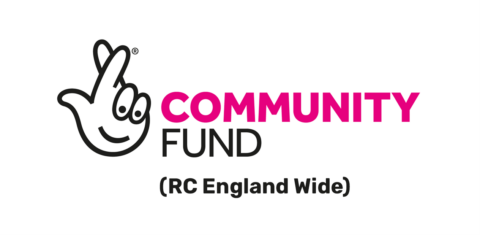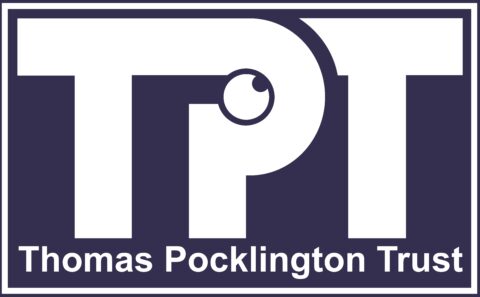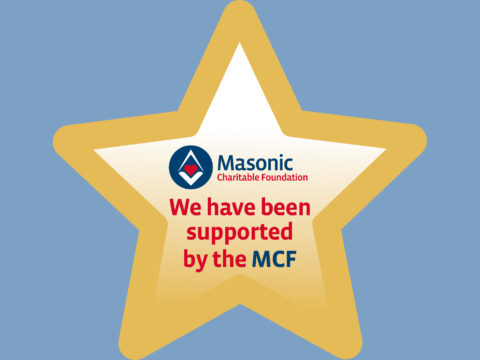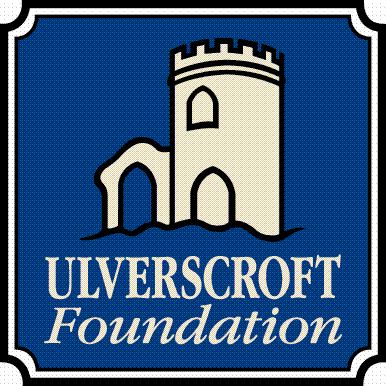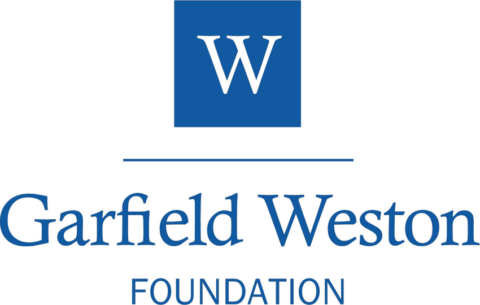SIGHTLINE VISION (NORTH WEST) LIMITED
(REFERRED TO AS SIGHTLINE IN THIS DOCUMENT)
Introduction
Voluntary, Community and Faith Sectors have a statutory duty to ensure that safeguards and arrangements are in place to:
- Protect an adult’s right to live in safety, free from harm, abuse, and neglect.
- Ensure that an adult at risk of abuse or experiencing abuse or neglect, their wellbeing is promoted, views, wishes, feelings and beliefs are taken into consideration before deciding any actions.
- Work with organisations, professionals, and others to not only prevent and stop the risk of abuse, but also to provide help, support and guidance to adults who have experienced abuse and/or neglect.
This policy details the safeguarding arrangements which must be in place to ensure Sightline fulfils its statutory duties and responsibilities with regards to the safeguarding of adults at risk of abuse.
For the purposes of this policy the term “staff” applies to any person engaged by Sightline in order to fulfil its objectives, including full time, part time or casual members of staff, volunteers, professionals and consultants working on behalf of Sightline, as well as the Trustees and members of the board.
This policy applies to all staff whenever they are undertaking work on behalf of Sightline or when representing Sightline.
Please refer to the Safeguarding and Protection of Children and Young People Policy for guidance and information on safeguarding procedures relating to children & young people.
Policy statement
Sightline considers the safety, emotional and physical wellbeing of Staff and Service Users of paramount importance irrespective of marriage status, age, sex, gender identity, sexual orientation, race, ethnicity, disability, religion or belief.
Sightline recognises that the effective safeguarding of adults at risk of abuse is a shared responsibility and that there is a need for effective joint working with other agencies and the individual(s) concerned.
This will be promoted and supported by:
- A commitment of senior managers and board members to seek continuous improvement with regards to safeguarding adults within the work of the organisation.
- Clear lines of accountability within the organisation for safeguarding.
- Service developments that take account of the need to safeguard all service users, and informed, where appropriate, by the views of service users.
- Staff training and continuing professional development so that staff understand their roles and responsibilities in relation to the safeguarding of adults at risk, implications of the Mental Capacity Act, and an overview of PREVENT.
- Appropriate safeguarding supervision and support for staff in relation to safeguarding practice.
- Safe working practices including recruitment and vetting procedures.
- Effective interagency working, including effective information sharing.
Sightline Safeguarding Lead is: Ian Edwards
Definitions
Adult at Risk / Vulnerable Adult
Sightline have adopted the definition of an adult at risk / vulnerable adult from
Section 42 of the Care Act 2014:
- An adult who may be vulnerable to abuse or maltreatment is deemed to be someone aged 18 or over, and:
- Has needs for care and support (whether or not the local authority is meeting any of those needs);
- Is experiencing, or is at risk of, abuse or neglect; and
- As a result of those needs is unable to protect themselves against the abuse or neglect or the risk of it.
This document will use the term “adult at risk” from here onwards as this is the newly accepted terminology.
This could include people with learning disabilities, mental health problems, older people and people with physical disabilities or impairments. This can include people who are vulnerable themselves as a consequence of their role as a carer for such a person.
They may need additional support to protect themselves, for example, in situations such as domestic violence, physical frailty or chronic illness, sensory impairment, challenging behaviour, drug or alcohol problems.
Mental Capacity
The Mental Capacity Act (MCA) 2005 provides a statutory framework that underpins issues relating to capacity and protects the rights of individuals where capacity may be in question. MCA implementation is integral to safeguarding adults at risk.
PREVENT
(Radicalisation of vulnerable people)
Prevent is one of the four key principles of the counter-terrorism strategy (CONTEST), which aims to stop people becoming terrorists or supporting terrorism.
The Prevent Strategy addresses all forms of terrorism including extreme right wing but continues to prioritise according to the threat posed to our national security.
The aim of Prevent is to stop people from becoming terrorists or supporting terrorism and operates in the pre-criminal space before any criminal activity has taken place.
The Prevent Strategy now sits under safeguarding and depends on an integrated approach from all organisations for its success. All terrorist groups need to radicalise and recruit people to their cause, often (but not always) from vulnerable groups. Prevent means intervening to try to stop people moving from extremist groups or extremism into terrorist-related activity.
What is Abuse:
Abuse is the violation of any individual’s human or civil rights by any other person or persons.
Abuse may consist of a single act or repeated acts. It may be physical, verbal or psychological, an act of neglect or an omission to act, or it may occur when a vulnerable person is persuaded to enter into a financial or sexual transaction to which he or she has not consented, or cannot consent. It may also occur through deliberate targeting or grooming of vulnerable people and may be carried out by individuals or groups of individuals.
Abuse may occur when a vulnerable adult:
- Lives alone, with a relative, or other(s)
- Attends nursing, residential or day care settings
- Is in hospital or custodial situations
- Is receiving support services in their own home
- Is in other places previously assumed safe
- Is in public places
Physical Abuse
- Includes the assault, hitting, slapping, kicking, pushing and misuse of medication, use of restraint or inappropriate physical sanctions and Female Genital Mutilation.
Sexual Abuse
- Includes rape and sexual assault or sexual acts, to which the vulnerable adult has not consented, or could not consent or was pressured into consenting. Inappropriate touching and fondling, indecent exposure, penetration (or attempted penetration) of vagina, anus or mouth by penis, fingers, or other objects.
Psychological Abuse
- Includes emotional abuse, threats of harm or abandonment, deprivation of contact, humiliation, blaming, controlling, intimidation, coercion, harassment, verbal abuse, isolation or withdrawal from services or supportive networks, withholding affection, shouting, depriving the person of the right to choice, information and privacy. Behaviour that has a harmful effect on the vulnerable adult’s emotional health and development.
Financial or Material Abuse
- Including theft, fraud, exploitation, and pressure in connection with wills, property or inheritance or financial transactions, or the misuse or misappropriation of property, possessions or benefits.
Neglect and Acts of Omission
- Including ignoring medical or physical care needs, failure to provide access to appropriate health, social care or educational services.
- The withholding of the necessities of life, such as medication, adequate nutrition and heating.
- Also the failure to acknowledge issues of sex and gendered difference and diversity and undermining personal faiths and beliefs.
Discriminatory Abuse
- Including racism, sexism, and ageism, based on a person’s disability, and other forms of harassment, slurs or similar treatment.
Domestic violence
- Any criminal offence arising out of physical, sexual, psychological, emotional or financial abuse by one person against a current or former partner in a close relationship or against a current or former family member, including Honour based Violence and Forced Marriage.
- There is no statutory offence of “domestic violence”, it is a generic term to describe a range of behaviours often used by one person to control or dominate another with whom they have had a close relationship.
Organisational Abuse
- Involves the collective failure of an organisation to provide an appropriate and professional service to vulnerable people.
- It can be seen or detected in processes, attitudes and behaviour that amount to discrimination through unwitting prejudice, ignorance, thoughtlessness, and stereotyping.
- It includes a failure to ensure the necessary safeguards are in place to protect vulnerable adults and maintain good standards of care in accordance with individual needs, including training of staff, supervision and management, record keeping and liaising with other providers of care.
- Poor professional practice also needs to be taken into account. This may take the form of isolated incidents of poor or unsatisfactory professional practice, at one end of the spectrum, through to pervasive ill treatment or gross misconduct at the other. Repeated instances of poor care may be an indication of more serious problems; this is sometimes referred to as institutional abuse.
Modern slavery
- Encompasses slavery, human trafficking and forced labour and domestic servitude. Traffickers and slave masters use whatever means they have at their disposal to coerce, deceive and force individuals into a life of abuse, servitude and inhumane treatment.
Self-neglect
- Where an adult is at high risk due to severe injury and/or death due to lifestyle/self-neglect/refusal of services.
- There is no perpetrator in these cases and the adult at risk has mental capacity to make choices about their care and support. It is designed to ensure effective multi-agency working and decision making.
Stranger abuse will warrant a different kind of response from that appropriate to abuse in an ongoing relationship or in a care location.
Nevertheless, in some instances it may be appropriate to use the adult protection procedures to ensure that the vulnerable person receives the services and support that they need. Such procedures may also be used when there is the potential for harm to other vulnerable people.
Harm should be taken to include not only ill treatment (including sexual abuse and forms of ill treatment which are not physical), but also the impairment of, or an avoidable deterioration in, physical or mental health; and the impairment of physical, intellectual, emotional, social or behavioural development.
Any or all types of abuse may be perpetrated as the result of deliberate intent, negligence or ignorance.
It is important to note that any or all of these types of abuse may be perpetrated as the result of deliberate intent, negligence or ignorance.
Recognising Abuse
The following are indicators for assessing the risks involved where abuse is suspected.
Social and emotional indicators
- The vulnerable adult appears to be withdrawn or agitated and anxious.
- They may be isolated in one room of the house or confined to living in a small space.
- Their mobility is restricted due to absence of suitable mobility aids.
- They may be excluded from outside social contacts.
- They are overly subservient or anxious to please.
- Professional and other visitors may have difficulty gaining access to the vulnerable adult.
- Lack of eye contact – looking at the floor during discussions or looking to others to answer questions even when directed to the individual.
- Dramatic changes in behaviour or personality; depression or confusion, for which no medical explanation can be offered.
- Refusal to allow the person into respite/permanent care.
- Poor condition, lack of clothing, lack of access to own money.
Indicators of physical abuse
- Multiple bruising that is not consistent with the explanation e.g., a fall.
- Cowering and flinching.
- Bruised eyes, marks resulting from a slap and/or kick, other unexplained bruises.
Indicators of sexual abuse
- Changes, i.e., the person starts to seek attention where previously they did not, by expressing over sexualised behaviour, or becoming fixated on sexual matters.
- Complaints of soreness in genital/anal area, no medical cause known.
- Recurring conditions such as thrush or cystitis.
- Diagnosis of a sexually transmitted disease when the person is not known to be sexually active.
- Bruising on the inner thighs or shoulders.
- Objects to being washed in genital areas, which is a change in behaviour.
Indicators of financial or material abuse
- Unexplained or sudden inability to pay bills.
- Unexplained or sudden withdrawal of money from accounts.
- Contrast between known income or capital and unnecessarily poor living conditions especially where this has developed recently.
- Personal possessions of value go missing from the home without satisfactory explanation.
- Someone has taken responsibility for paying rent, bills, buying food etc.; – but is clearly not doing so.
- Unusual interest taken by relative, significant partner, friend, neighbour or other in financial assets especially if little real concern is shown in other matters.
- Next of kin refuse to allow advice regarding control of property via Court of Protection or through securing enduring power of attorney, but insist upon informal arrangements.
- Where care services including residential care are refused under clear pressure from family, significant partners or other potential inheritors.
- Unusual purchases unrelated to the known interests of the vulnerable adult, e.g., purchases of fashionable clothes, expensive make-up, food and holidays.
Indicators of Institutional abuse
- There is poor staff morale, high turnover or high sickness rate amongst staff and excessive hours are worked.
- Services organised around heteronormative assumptions that fail to recognise and acknowledge the different needs of people in same sex relationships.
- There is a general lack of consideration of privacy, e.g., staff walk casually into bedrooms; washing and personal care tasks (going to the toilet) lack appropriate privacy; there is no telephone that can be used privately.
- Residents/service users appear unusually subdued, especially when compared to their previous behaviour; they retreat into their own room or other areas out of the way of staff.
- Lack of care when dealing with personal clothing, e.g., loss of clothes, being dressed in other people’s clothes, dirty or unkempt, spectacles not clean, wearing other people’s spectacles, hearing aid or teeth.
- Poor hygiene, e.g., strong smell of urine; dirty clothing or bed linen, only changed when staff consider it necessary.
- Inappropriate use of tip back chairs, excessive use of bed rails, chairs with fixed tables.
- Inappropriate use of medical or nursing procedures, e.g., enemas, catheterisation, over reliance on medication.
- Lack of communication between staff about service users.
- Lack of communication between relatives and staff.
Respect for the individual
When abuse has been disclosed, reported or observed, it is important that the alleged victim be treated with dignity, is involved as an equal in the investigation, and kept fully informed on a regular basis.
They have the right:
- To be believed when they report abuse of themselves and/or others, unless there is direct and unequivocal evidence to the contrary.
- To appropriate education/information in order to identify behaviour which constitutes abuse.
Sightline will ensure all relevant and appropriate professionals are alerted and involved to support all adults wherever possible, including:
- The right to be safeguarded from abuse.
- Their needs regarded as paramount.
- The right to be taken seriously.
- To be offered independent advocacy and/or support and be kept informed of safeguarding processes and outcomes, as appropriate.
- The right to appropriate information on the safeguarding process.
- The right to privacy and confidentiality throughout the safeguarding process, except where there is a requirement to override.
- The right to be involved in decisions regarding themselves, made as a result of the safeguarding process.
Sightline will support any adult in facilitating access to advocacy services including making a referral in the absence of statutory services.
Any intervention to protect an adult at risk must be carried out with their consent unless this will increase their risk of harm, e.g. female genital mutilation (FGM), honour based violence or domestic abuse, thus highlighting that there may be occasions where consent is not required, due to an agency’s duty to protect others. This may be when there are concerns regarding wider groups of adults, young people or children at risk or when a criminal offence has taken place.
Procedure for responding to reports and incidents of abuse or alleged abuse
Assessing the Seriousness of Abuse
The seriousness or extent of abuse is often not clear when anxiety is first expressed. It is important therefore, when considering the appropriateness of intervention, to approach reports or incidents or allegations with an open mind.
In making any assessment of seriousness the following factors need to be considered:
- The vulnerability of the adult
- The nature and extent of the abuse
- The length of time it has been occurring
- The impact on the individual and/or their carers/family
- The risk of repeated or increasingly serious acts involving this or other vulnerable adults
A decision may need to be made immediately about any urgent action required to protect the vulnerable adult. If the person is at great risk of harm or in need of immediate medical attention, contact should be made directly with the emergency services.
If the (alleged) perpetrator is also a vulnerable adult, consideration must be given to their safety and well-being and to their needs as vulnerable adult.
The views of the service user should always be taken into account and generally permission would be asked before doing so.
However in exceptional circumstances, for example if it is considered someone is at serious risk of abuse then information may be disclosed without consent.
All matters of concern referred, will be investigated and should be passed to the Designated Safeguarding Lead.
Roles and Responsibilities
- To ensure that safeguarding is integral to clinical governance and audit arrangements within the service.
- Ensure that the service meets the contractual and clinical governance arrangements on safeguarding adults.
- To ensure that all staff in contact with adults at risk to be alert to the potential indicators of abuse or neglect and know how to act on those concerns in line with local guidance.
- To ensure that the service operates safe recruitment processes in line with national and local guidance including disclosure and barring and managing allegations against staff.
- Ensure safeguarding responsibilities are reflected in all job descriptions.
- Act as a contact on safeguarding adults at risk and Mental Capacity Act matters; this may include requests to contribute to sharing information required for safeguarding enquiries where appropriate.
- Disseminate information in relation to safeguarding adults/Mental Capacity Act to all staff members.
- Act as a point of contact for service users, family members and public to bring any concerns that they have, to document those concerns and to take any necessary action to address concerns raised.
- Share information received on safeguarding concerns promptly and in line with the appropriate Local Authority Safeguarding Enquiry Team, clarifying or obtaining more information about the matter as appropriate and as advised.
- Facilitate access to safeguarding supervision and support for staff working with adults at risk and their families (as appropriate).
- Ensure that the staff team complete the services agreed incident forms and analysis of significant events forms.
- Be responsible for facilitating safeguarding training opportunities for individual staff groups.
Individual staff members, including all employed staff and volunteers:
- To be alert to the potential indicators of abuse or neglect and know how to act on those concerns in line with national guidance and the Local Authority safeguarding adult procedures.
- To take part in training, including attending regular updates so that they maintain their skills and are familiar with procedures aimed at safeguarding adults and implementation of the Mental Capacity Act.
- Understand the principles of confidentiality and information sharing in line with local and government guidance.
- To contribute, when requested to do so, to the multi-agency meetings established to safeguard and protect adults at risk.
- Recognise the importance of sharing information, in confidence and with a lead person, regarding concerns they have about a colleague’s behaviour.
- To minimise any potential risk to an adult at risk.
Making an Alert to the Local Authority Safeguarding Adults Team
This should always be the case if the adult remains in or is about to return to the place where the suspected/alleged abuse occurred and the alleged abuser is likely to have access to the adult or others who might be at risk.
In the first instance staff should alert the Manager/Safeguarding Lead for Sightline detailing their concerns and providing the following information:
A referral should still be made even if some of the information is missing.
The referrer is not expected to prove abuse has happened but to provide information based on the disclosure from the adult at risk.
All members of staff have a duty of care in terms of challenging poor practice and escalating their concerns appropriately.
Once the information has been received by the Manager/Safeguarding Lead, it will be assessed and a decision made on the action to be taken in accordance with local area safeguarding procedures. Staff must not involve or discuss the concern or alert with other staff or service users.
In an emergency staff will need to consider the immediate safety of the person concerned and if required ring 999 in an emergency.
Record Keeping:
It is vital that any information regarding an alert or a safeguarding concern is recorded and kept confidential.
If you are required to share information you must record then what you have shared, with whom and for what purpose as your records may form part of a safeguarding meeting which you may be asked to attend.
Contributions to multiagency safeguarding meetings are invaluable and support best practice. Where there are concerns about a vulnerable person, all concerns, discussions and decisions made and the reasons for those decisions must be recorded in writing in the service user records.
Records must be stored appropriately and in accordance with information governance guidelines (i.e. Sensitive data should be stored securely).
Sharing of information
Sharing of information is vital for early intervention to ensure that adults at risk get the services they require. It is also essential to protect people from suffering harm from abuse or neglect.
It is essential that all staff understand when, why and how they should share information. Always consider the safety and welfare of the person when making decisions on whether to share information about them.
Where there is concern that the person may be suffering or is at risk of suffering significant harm then their safety and welfare must be the overriding consideration and information must be shared.
Managing allegations
Adults at risk can be subjected to abuse by those who work with and come onto contact with them in any and every setting.
All allegations of abuse or maltreatment by any member of staff will be dealt with in accordance with Sightline’s Disciplinary Policy for Safeguarding Issues – Staff, Volunteers, Trustees and other Employees.
Reporting a caution or conviction
If an employee who works with children or vulnerable adults in regulated activity has been cautioned or convicted for a relevant offence Sightline must make a referral to the DBS.
Such a disclosure must be referred immediately to the Designated Safeguarding Lead who will then make a referral to the DBS.
A relevant offence is a serious offence that will, subject to consideration of representations where permitted, automatically bar a person from working with children or vulnerable adults.
Whistleblowing
This will also include behaviour that is not linked to safeguarding but that has pushed the boundaries beyond acceptable limits.
Complaints procedure
Sightline has a clear well publicised procedure that is capable of dealing with complaints from all service users, families and employees.
Please refer to the Sightline Complaints Procedure. Consideration should always be given to whether a complaint meets the criteria for a safeguarding referral or managing allegations procedures.
Learning and Development of Staff
To protect people from harm, all staff must have the training and competences to recognise adults at risk of or actual abuse and to take effective action as appropriate to their role.
The National Competency Framework for Safeguarding Adults outlines the competencies within the workforce to allow staff and volunteers to ensure the safety and protection of adults at risk of abuse.
All staff and volunteers will receive training and information on safeguarding adults at level 1, with Managers and Safeguarding Leads receiving training at level 2 or 3 as appropriate.
All training will be recorded and evaluated to ensure safe, appropriate safeguarding and in line with national guidance.
Safeguarding Supervision
Staff and volunteers working with adults at risk have access to support and safeguarding supervision as part of their employment / service. This is to ensure that all staff and volunteers have an opportunity for staff to share their concerns and to enable them to manage the stresses inherent in this work.
It is important to note that staff shouldn’t wait until supervision to share immediate concerns which need to be alerted to the safeguarding team.
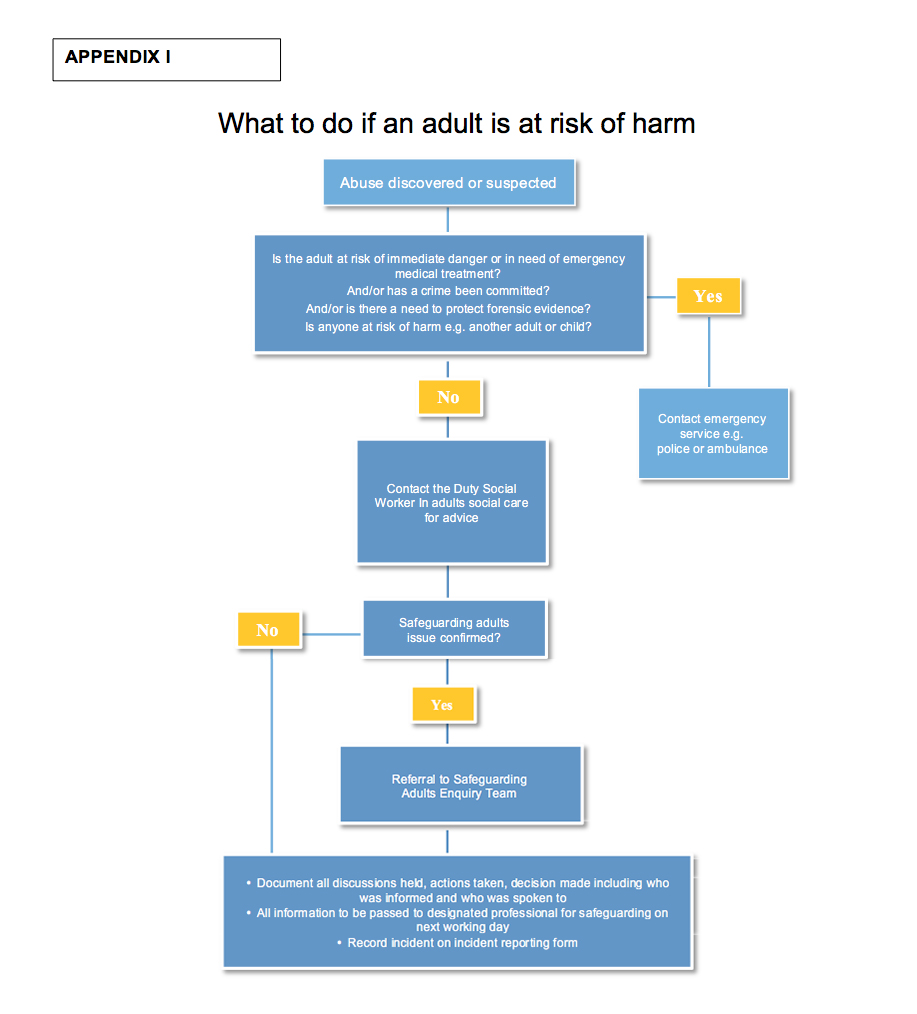
Implementation date: May 2022
Signed / Approved by: Ian Edwards, Charity Director and Peter Howard, Chair of Board of Trustees.
Dated: 18 May 2022
Review Date: May 2024 – completed
Next Review Date: May 2025
Author: Mark Andrew Scott
PGDip OSH, BA(Hons) Education and Training, GradIOSH, (MinstLM)
Director – TLC Learning Academy Limited
mark@tlclearningacademy.com
Beacon House, 19 Jubilee Crescent, Winnington, Northwich. CW8 4GD.
Tel: 01204 404140
Frequency of Review: Annually
Version: Final

